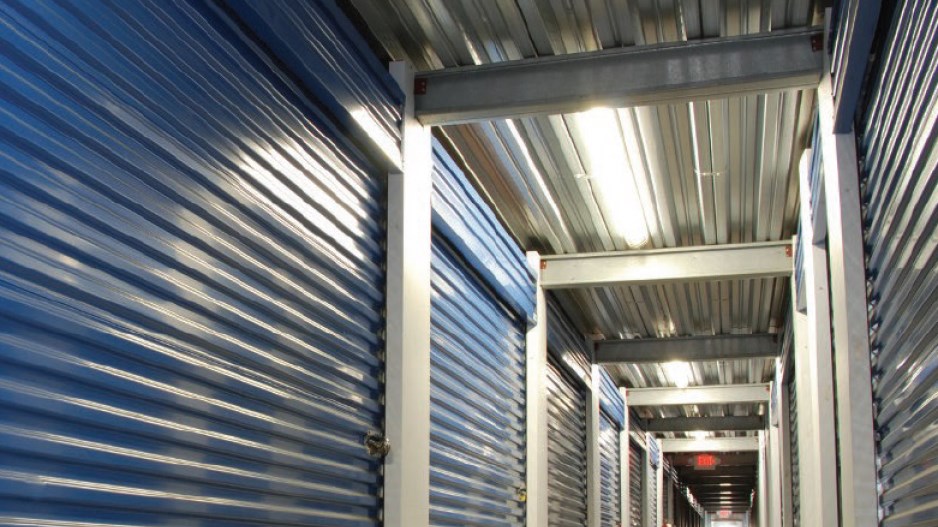When self-storage giants StorageVault Canada Inc. and Access Self Storage reached a $55 million agreement May 14 for Toronto-based StorageVault to acquire the “asset and business” of an Access store in B.C., it underlined how the self-storage business is changing.
While the industry is still largely the domain of mom-and-pop operations – the Canadian Self Storage Association estimates that at least 80 per cent of operators are independents that manage no more than one storage facility – large U.S. and Canadian portfolio owners are scaling up by swallowing smaller operators.
In the past fiscal year, StorageVault closed on $373 million in acquisitions and it now owns or controls 161 storage locations with six million square feet of rental space across the country.
With 140 Canadian locations, Access is another of the half-dozen major players in self-storage. These include U.S.-based StorageMart, which holds a 4.4 per cent share of the Canadian market; and U-Haul, owned by Amerco, which has about four million square feet of storage space. Edmonton-based Sentinel Storage has a 2.5 per cent slice of the Canadian market, with 24 locations, mostly in B.C. and Alberta.
Smaller operators are being acquired by bigger companies because it is less expensive to buy facilities than to build new ones, due to rising land costs and the uneven development and zoning guidelines in provinces and municipalities. That's according to IBISWorld, which has released an exhaustive study of Canada’s self-storage industry.
Some companies are buying existing commercial and industrial property and converting it to storage because the profit margins can be higher. Bluebird Self Storage bought the former National Post building in downtown Toronto for $20 million and spent the same amount converting it to high-end storage lockers.
Phoenix-based U-Haul International Inc., which operates more than 1,300 self-storage locations across North America, has converted the former Zellers department store in Kelowna to self-storage. The 110,000-square-foot facility contains more than 1,000 indoor climate-controlled storage units.
Fuelled largely by demand from the residential sector and small business, the number of self-storage operators in Canada has been expanding at 4.8 per cent annually for the past five years to 1,045 operators, IBISWorld found.
The real estate investment characterized by high capitalization rates, relatively low maintenance costs and rising profits has also attracted other large investors, including real estate investment trusts (REITs) and pension funds. Skyline Commercial REIT, for instance, has bought nine cold-storage facilities so far this year, spending $190 million in a buying binge that included facilities in Calgary, Saskatoon and Winnipeg.
Ivanhoé Cambridge, the real estate arm of the Caisse de dépôt et placement du Québec pension fund, holds a 50 per cent share in Vancouver-based VersaCold, which specializes in cold storage.
Demand for storage units and decreasing vacancy rates helped industry profit margins, measured as earnings before interest and taxes, reach 10.5 per cent in 2019, up from 9.1 per cent in 2014, IBISWorld reports.
Modern storage is becoming expensive, however, due to demand for climate-controlled space and round-the-clock security, according to Cushman & Wakefield, a commercial agency, which has a self-storage division. Also, increasing competition is forecast to drop revenue growth to 1.7 % annually over the next five years, down from 3.1 per cent this year.
Still, a new self-storage facility can churn an ongoing capitalization rate average of 6.27 per cent to 8.7 per cent, which is higher than most commercial real estate, Cushman & Wakefield estimates.
Residential tenants account for the majority of self-storage clients, making up 63.4 per cent of rentals. Commercial tenants rent 25.2 per cent of storage units, with students and military clients making up the rest of the annual $920.9 million annual industry, according to IBISWorld.
Revenue is rising faster from commercial tenants than from the residential sector, however, due to small-business growth. The average commercial tenant rents a storage unit for 22.7 months, considerably longer than the average residential client’s rental.
Storage rental prices can reach $3.50 per square foot in Â鶹´«Ã½Ó³»and Toronto, and are also close to residential apartment rates in other major cities, without the hassle of dealing with residential rental regulations. Since rents are calculated monthly, storage facilities can also often earn more money per square foot than traditional commercial space, where rents are annual.
“Storage lockers are a simple investment – there is often no heat, little maintenance and, if you want to make it a luxury unit, you put in a light bulb,” quipped Â鶹´«Ã½Ó³»real estate consultant Ozzie Jurock.



